In terms of area, Russia is the world’s largest country in the world, covering about 11 percent of the world’s total land area. With a GDP of 1.77 trillion dollars, the country ranks 11th in the world and 5th in Europe. Russia is a country rich in fossil fuels and various natural resources such as metals like aluminum, copper, gold, silicon, and various non-metals and minerals. In fact, in 2021, about 40 percent of the total natural gas consumption of the 27 countries of the European Union came from Russia. Following Russia’s invasion of Ukraine in February 2022, the USA, the EU, and other Western allies imposed several economic sanctions against Russia. Even, Russia’s $300 billion worth of gold and foreign reserves were also frozen. As a result, in January 2022, when every US dollar was being exchanged at 78 rubles, after the sanctions, it fell to the lowest level in the last two decades, at 138 rubles. However, the ruble started to strengthen again in April and is currently trading at 60 rubles per dollar. When the value of a country’s currency starts to rise against the US dollar, it basically indicates that country’s economic strength. But how the Russian economy has become so strong despite so many sanctions?
Overview
Prior to the formation of the Soviet Union, monarchy existed in the present-day Russian region and the surrounding territories. This union consisted of 15 Soviet Socialist Republics – Armenia, Azerbaijan, Belarus, Estonia, Georgia, Kazakhstan, Kyrgyzstan, Latvia, Lithuania, Moldova, Russia, Tajikistan, Turkmenistan, Ukraine, and Uzbekistan. Tsarism in that region began in 1547 and the emperor of the Russian monarchy was originally called Tsar. Although in 1721 the fall of Tsarism to the Romanov family led to the establishment of the Russian Empire, but Tsar and Tsarina were still in use as another title of Emperor or Empress of all the Russia.
These Romanovs of Russia were distant cousins of the royal family of the British Empire. During the reign of Tsar Nicholas the Second, who came to power in 1894 in the late 19th century, the country experienced economic inequality and inflation. The impact of World War I caused the state’s national budget to increase eightfold between 1913 and 1916, and the cost of daily necessities increased by nearly 200 percent. In addition, the king was more focused on increasing military strength than focusing on the ongoing food crisis in the kingdom. Consequently, the 5-year Russian Revolution that began in 1917 following the end of World War I led to the fall of the monarchy and the rise of the Union of Soviet Socialist Republics, the USSR, as the world’s first Marxist-communist state. At that time, the Soviet Union was the largest and most powerful country in the world, occupying about one-sixth of the total land area of the world.
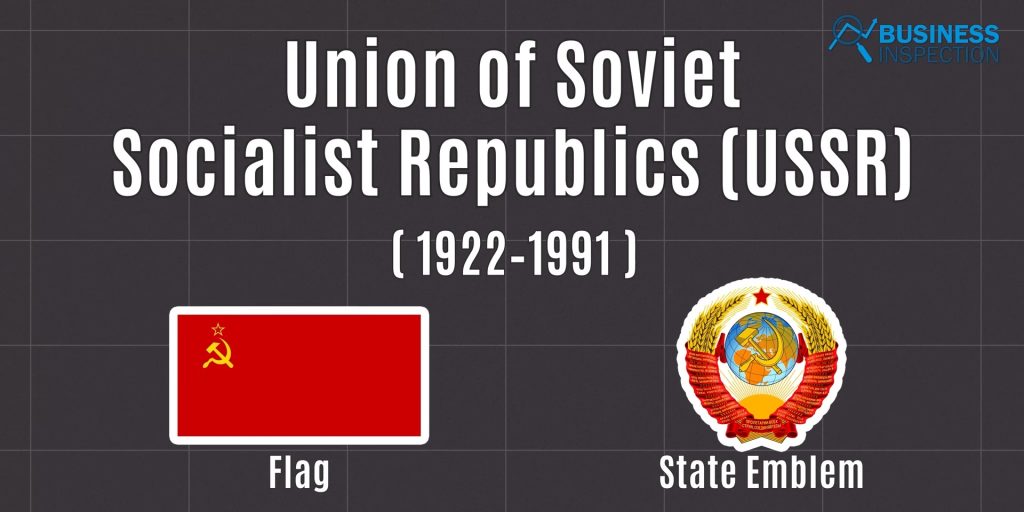
In 1924, the Soviet Union adopted its constitution and five-year plans for economic growth and transformation. Early on, the Soviet government began nationalizing all agricultural land, known as collectivization and focused on rapid industrialization. In addition, the country’s government focused on increasing weapons and military capabilities. But the decision to collectivize agriculture created resentment among the country’s common people, and agricultural production declined. As a result, food shortages caused famine throughout the Soviet Union, causing the death of large numbers of people. Due to this focus on military power, the Soviet Union was able to repel German forces during World War II and began sponsoring communist governments in Eastern Europe that had been liberated. As a result, the USA, UK, Canada, and other European countries started a cold war with Russia, fearing the spread of communism in the world. At that time, both the USA and the USSR continued to build up their military strength and increase their nuclear arsenals. Also, the two superpowers continued to compete in space conquest where Russia sent artificial satellites and the first man into space, but the USA began to establish its superiority and dominance with the first successful lunar mission.
Meanwhile, the Cold War with the Western countries began to have a negative impact on the Soviet economy. In the 1960s and 1970s, the Communist Party’s emphasis on industrialization at all costs and party members acquiring vast amounts of wealth exacerbated economic inequality in the country, and ordinary Russians often suffered from starvation. Meanwhile, as world oil production rose from the early 1980s, oil prices began to fall sharply, which was a major shock to the Russian economy. At the same time, the USA and Western countries began to isolate Russia economically.
Around 1985, then-Soviet leader Mikhail Gorbachev adopted several policies to reform the economy into a hybrid communist-capitalist system, much like that of modern China, but Russia’s huge economy, decades of Cold War, economic isolation from Western countries, and public anger across the country couldn’t bear the load. Soviet power gradually declined in Eastern Europe and the Soviet Union collapsed on December 31, 1991. Then, the 15 independent states were born, of which present-day Russia emerged as the world’s largest state with an area of about 11 percent of the world’s total land area.
To revive the fledgling economy of the newly formed Russia after the collapse of the Soviet Union, Russia adopted the Washington Consensus, an economic policy reform initiative of the IMF, the World Bank, and the United States Department of the Treasury. The Washington Consensus is basically the 10 economic policy recommendations of the IMF, World Bank, and the United States Department of the Treasury, where Tax Reform, Trade Liberalization, Privatization of State Enterprises, Legal Security of Property Rights, Competitive Exchange Rate, Reduction of Public Spending on Subsidies is emphasized on these issues.
Beginning in 1992, the country began privatizing state-owned small and large enterprises, and by 1994, about 70 percent of Russian industry had been sold and converted into joint-stock companies. As a result, Russia’s economy gradually transformed from a planned economy to a mixed market-oriented economy. With a GDP of $1.77 trillion in 2021, Russia was ranked 11th in the global GDP ranking and 5th among European countries. At the same time, the country’s per capita income and GDP per capita were $11,600 and $14,670, respectively.
One of the reasons behind Russia’s economic strength is that it is a country with a large amount of natural resources. Russia is one of the major sources of energy supply in the world, especially in Europe, from which Russia earns a huge amount of foreign currency every year. Apart from natural resources, the country is also one of the top countries in the world that produces Cereal Grain and Sunflower Seeds.
On the other hand, despite being the largest country in the world in terms of size, the population of the country is less than Bangladesh, about 15 million. Due to this, Russia is a self-sufficient country in terms of important resources like food, and fuel for the country’s own needs. The country is also one of the most industrialized countries in the world in terms of production and manufacturing, with capabilities ranging from automotive to rocket manufacturing.
Utilizing this capacity, the country is able to meet most of the demand for manufactured goods through local industrial capacity. Even with a relatively small population, the country meets local demand and exports to neighboring countries. But compared to that the country has to import very little. Due to this, the country was able to maintain Current Account Surplus several times in the last two decades. Which helped the country to increase its foreign reserves.
For example, in 2021, Russia exported $550 billion against total imports of $379.9 billion. As a result, the country’s total trade surplus at the end of the year stood at more than $170 billion. According to a data source from the Central Bank of Russia, the country’s total foreign reserves currently amount to about $570 (568.8) billion. But in what sectors is Russia’s economy so strong now?

Why The Russian Economy Is So Strong
Energy Sector
The mainstay of the Russian economy is its energy sector. Oil and gas exports in particular play an important role in keeping the wheels of the country’s economy moving. In the late 1990s, when the free market was established in Russia after the collapse of the Soviet Union, energy exports targeted 90 percent of the country’s GDP. Energy export basically refers to the export of fossil fuels like oil, gas, LNG, coal, etc.
With 32 percent of the world’s natural gas reserves, Russia is at the top of the world and second in natural gas production. Russia’s largest gas company, GAZPROM alone controls 90 percent of Russia’s gas production, holding a quarter of the world’s gas reserves. Apart from gas production, the company exports gas across Europe through two pipeline networks called Nordstream and the country exported a total of 167 BCM of gas in 2021.
In fact, that year, about 40 percent of the total natural gas consumption of the 27 countries of the European Union came from Russia. In addition to natural gas, Russia exported a total of 40 billion cubic meters of liquefied natural gas or LNG in 2021, which is 8 percent of the world’s total LNG supply, and the country earned $7.6 billion from LNG exports in 2021.
In addition, Russia earned about $54.2 billion in 2021 from pipeline gas exports. In terms of crude oil production, Russia (11.6 percent) is just behind America (20.2 percent) and Saudi Arabia (12.1 percent). In 2021, Russia produced a total of 524.05 million tons of crude and condensate oil, 14 percent of the world’s total oil supply, and exported $110.2 billion worth of crude oil and $68.7 billion worth of oil products. Russia also has an extensive crude oil export pipeline (5500 Km) which is the longest pipeline network in the world. Using this network, Russia can ship oil directly to Europe and Asia. Currently, 20 percent of all oil refinery plants across Europe are supplied from Russia.
According to Statista, Russia’s oil and gas industry contributed more than 17 percent to the country’s GDP in 2021. Basically, because of these pipelines, the dependence of European countries on Russia has increased. To increase this dependency, just as Russia has been able to increase its export earnings from its natural resources, the country’s foreign reserves have also increased. The country’s oil industry was exempted from economic sanctions imposed on Russia.
Due to this, initially, the country’s economy suffered a bit, but the European Union’s dependence on Russia has helped the country’s economy to turn around in a short time. Apart from oil and gas, Russia ranks 2nd in terms of coal reserves and 6th in terms of coal production. The country produced 433.6 million tonnes of coal in 2021 and exported a total of 177.2 million tonnes of coal to the world’s two largest coal-importing markets – China and the European Union.
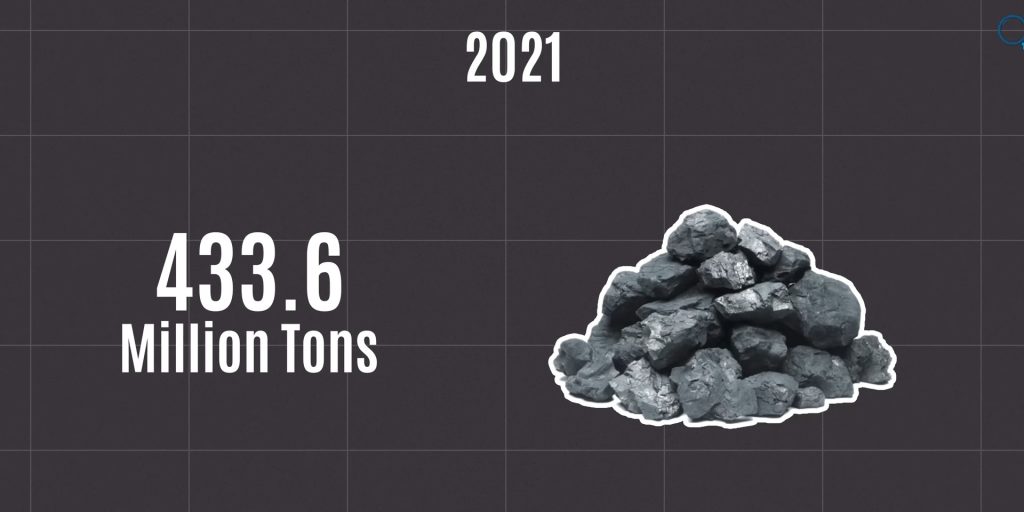
Mining Industry
Being rich in natural resources like oil, gas, and coal, Russia produces large quantities of mineral commodities such as aluminum, copper, magnesium, nitrogen, palladium, silicon, and nickel. In terms of silicon production, Russia ranks second in the world and the country produces an average of 7 lacs tons of silicon every year. Russia is the world’s third-largest producer of aluminum and supplies 33 percent of global aluminum demand. In 2021, the country produced 39.31 million metric tons of refined aluminum. In addition, Russia also meets 25 percent of global copper demand.
Moreover, Russia is one of the world’s largest suppliers of palladium, which is mainly used in automobile catalytic converters and meets 33 percent of global palladium demand. Apart from these, the country is also rich in various precious metals like gold and diamonds. In terms of gold production, the country’ ranks 2nd in the global ranking, and in 2021, Russia exported gold worth $15.5 billion to Britain alone. Also, the world’s largest diamond mining complex, the Aikhal Facility is located in Russia from which the country mined 32.4 million carats of diamonds in 2021.
Agriculture
Located in the Black Sea region, Russia, Ukraine, and Kazakhstan together are considered one of the 6 food baskets of the world. Russia ranks third in the world as an agricultural country and has a total of 123 million hectares of arable land. Russia is the world’s largest wheat exporter, and the country meets about 20 percent of the world’s wheat demand. In addition, the country also exports corn and sunflower seeds. In 2021, Russia earned $4.44 billion from agri-food exports across Europe. Russia is meeting the world’s food grain needs by producing more than its own need.
Due to this, most of the countries in the world depend on Russia in terms of Cereal Grain. When the Western countries imposed sanctions on Russia, then the prices of various food items started to rise across many countries and pushed the world towards food inflation. Due to this, the western countries were forced to change the sanctions imposed on Russia to save the poor population of Asian and African countries from food shortages caused by inflation.
Such control over food grains is another factor in Russia’s economic strength. Apart from various food grains, Russia is also one of the exporters of fertilizers. Russia exports an average of 23 percent of ammonia, 14 percent of urea, 10 percent of processed phosphate, and 21 percent of potash annually. Among the primary export destinations of Russian fertilizers are Brazil (21 percent), China (10 percent), USA (9 percent), and India (4 percent). These countries are also major agricultural producers in the world.
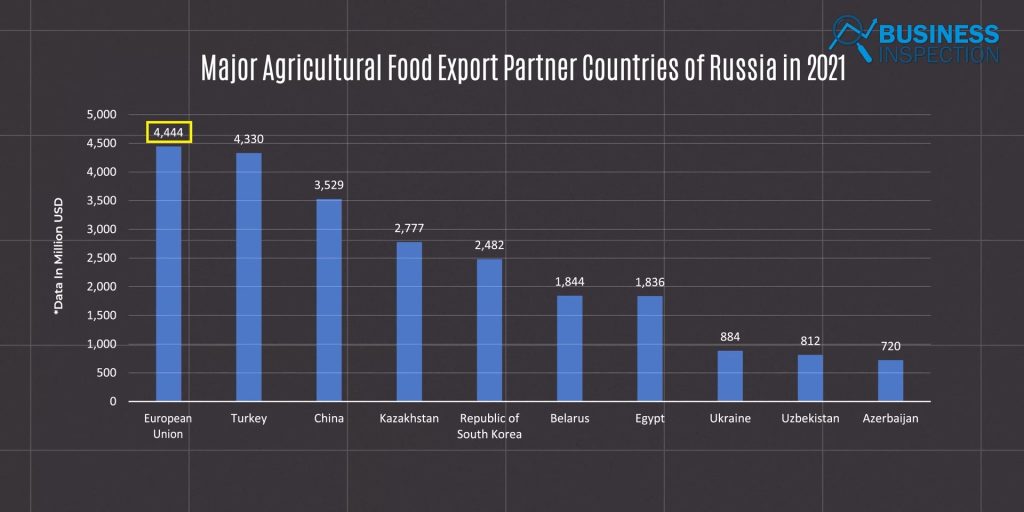
Manufacturing
Russia is one of the most industrialized countries in the world. Russian manufacturing industries include automobiles, railway engineering, agricultural machinery, etc. Between 2020 and 2022, the Russian domestic vehicle market sold an average of 1.6 million to 1.75 million units, accounting for 2 percent of the world’s total automobile industry and 1/10 of the US market. In addition, with more than 80,000 kilometers of rail tracks, Russia is well ahead in the global rail communication system, and this rail communication system of Russia, which is completely government-sponsored, is also called the economic wonder of the last three centuries. Also, due to the large amount of arable land in Russia, it manufactures and exports farming machinery such as tractors, feed crushers, cultivators, etc. Russia’s ability to meet its own needs in manufactured products means that the country has to import very little, saving Russia a lot of import trouble.
Military Equipment & Space Industry
Russia is one of the world’s military superpowers and the country’s position is second in terms of military capabilities. Russia has more than 850,000 active duty troops and another 300,000 reserve troops. In addition, Russia has 12,000 tanks, more than 4,000 aircraft, 20 tanker fleets, 15 destroyers, and 70 submarines, along with many other high-tech military vehicles and equipment, such as fifth-generation fighter jets, nuclear-powered submarines, firearms, and ballistic missiles. Apart from manufacturing these weapons for its large army, the country is the world’s second-largest arms exporter after the USA. Even by meeting 20 percent of the world’s military equipment demand, the country earned about $15 billion (14.6) in 2021.
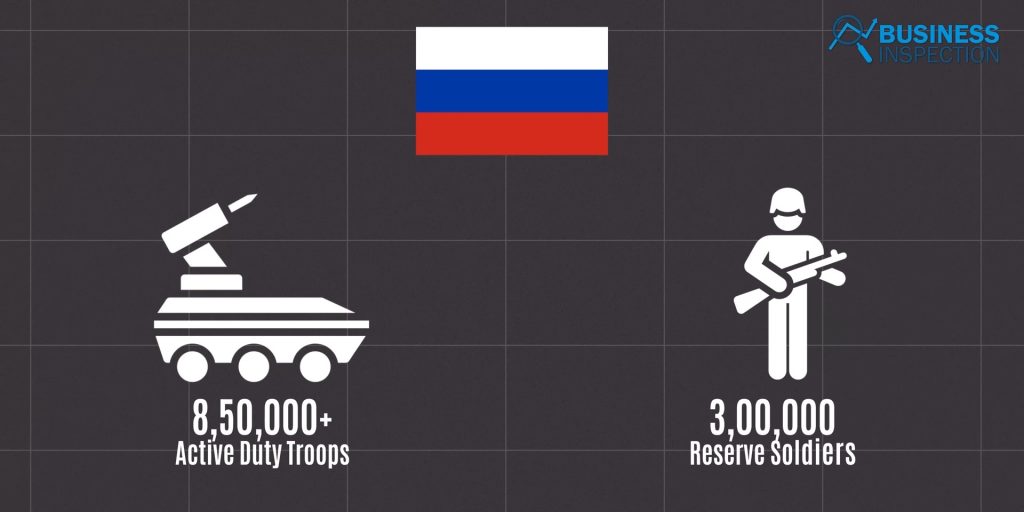
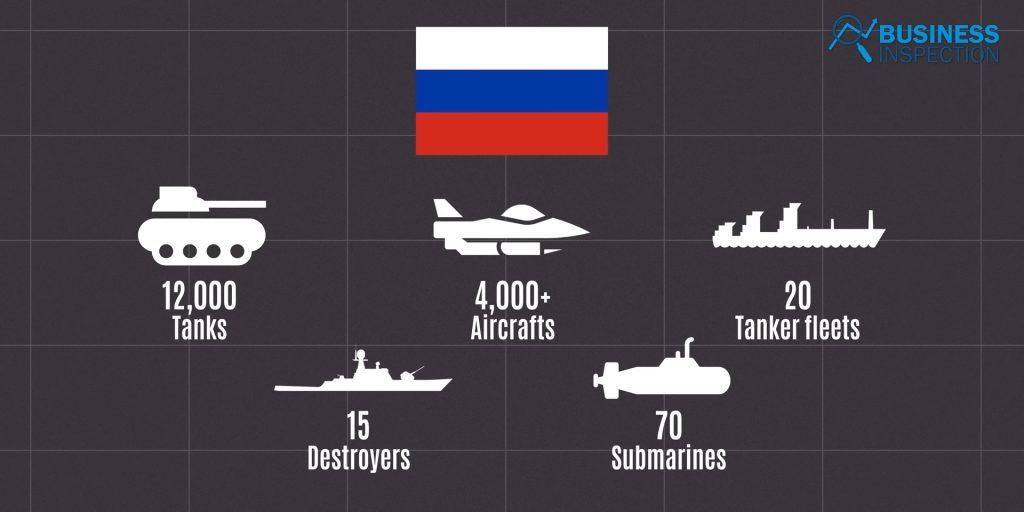
Construction
The construction industry is the 7th largest economic sector in Russia. On average, the industry provides employment opportunities for 5 to 6 million people annually, and the size of the Russian construction market in 2021 was $181.1 billion. In addition to road and rail construction, Russia is also working successfully in nuclear facility construction. According to Rosatom, Russia’s state corporation, Russia is building 7 nuclear reactors domestically and 34 around the world, including the Ruppur nuclear power plant in Bangladesh. This capability is helping the country to strengthen its economy by exporting construction expertise.
Other
Apart from these sectors, there are several other sectors contributing to the Russian economy, alcohol being one of them. Russia is the fourth-largest alcohol market in the world in terms of consumption. According to a report by Grand View Research, the market size of the global alcohol industry in 2021 was about one and a half trillion dollars of which Russia holds 5 percent. In addition, Russia is the world’s ninth-largest alcohol importer. Around 91 percent of the whiskey consumed in Russia is imported. However, in terms of vodka, the country is the world’s largest producer of vodka, producing more than 30 percent of global production, but most of it is consumed locally.

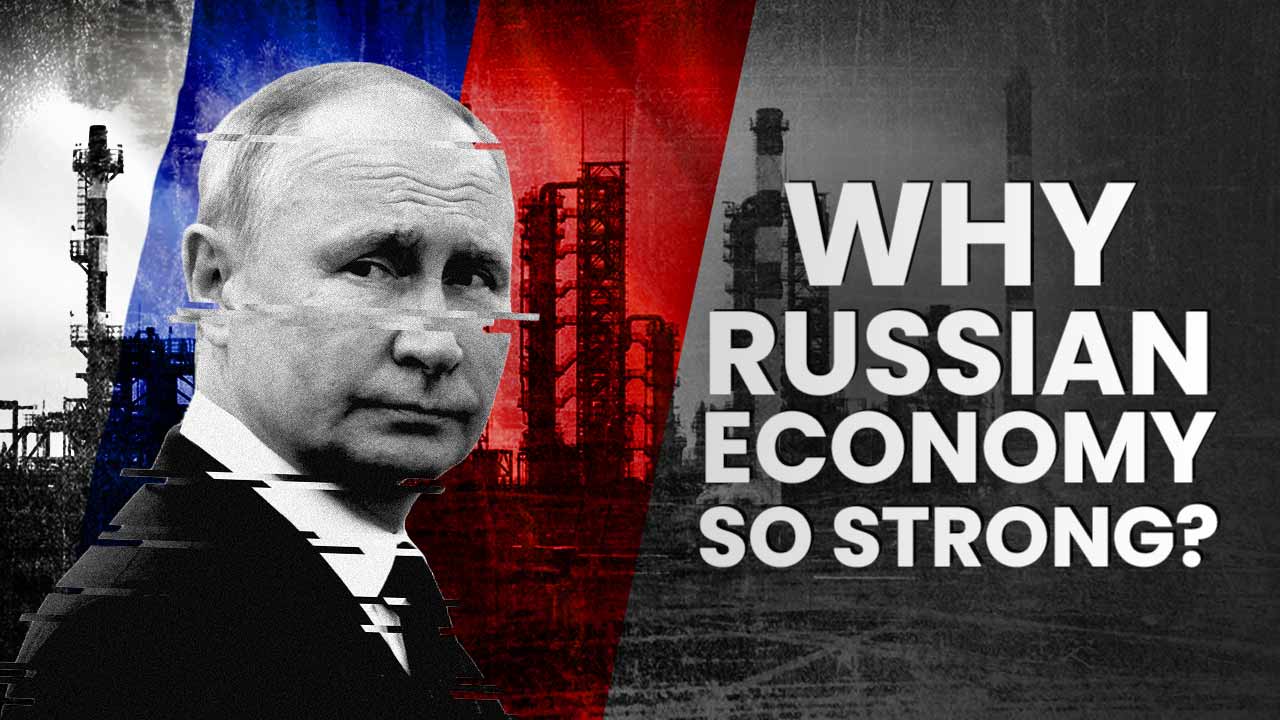








Leave a Comment